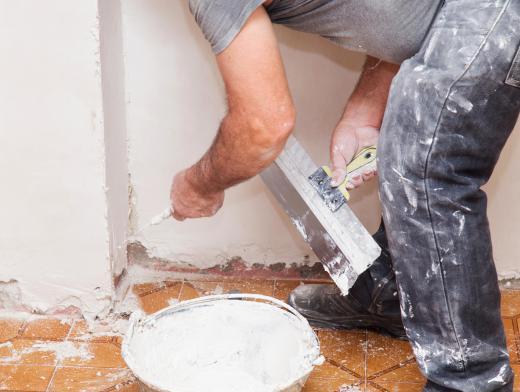What is Emissivity?
 Mary McMahon
Mary McMahon
Emissivity is a measurement of how well something radiates absorbed energy. For many common objects, known measurements are readily available, with charts of their emissivity in various situations being printed in many texts and references. For others, some measurements can be conducted to determine the level of emissivity. This property can be important to measure, and it has a number of interesting applications which can make objects with unusually high or low emissivity artistically, scientifically, or commercially useful.
To measure this property, one determines how much radiation is emitted by the surface of the material in question at a given temperature. This number is used to create a ratio with the amount of radiation emitted by a black body at the same temperature. For a black body, the value is one. For everything else, the number can range from zero to one. The higher the emissivity, the closer the ratio approaches one; something with a level of .95, for example, has very high emissivity.

The more reflective something is, the less emissivity it has. Dark, dull objects like asphalt, basalt, wood, and paper tend to have high values. Reflective objects like silver and tinfoil have very low emissivity, and high reflectivity. When added together, the two values of emissivity and reflectivity should equal one, illustrating the balance between the reflection and emission of radiant energy.
The ability to reflect more or less energy can be important. Windows, for example, may be wrapped or coated in low emissivity materials to control the temperature within the house. Low-E glass, as it is known, reflects radiant energy from the inside, keeping heat inside rather than allowing it to be lost through the windows, and it also reflects radiant energy from the outside, keeping the house cool in summer. Highly reflective materials are also used in insulation to minimize transfer of heat, making a structure more efficient.
The ratio does not necessarily remain constant. Many things can impact the value. The temperature is one aspect, as is the wavelength and angle of the energy. Testing materials in various conditions should give a range of values. A material like ceramic, for example, can have a broad spread of values, which is important for people like artists to know.
Some examples of values for common objects include: .02 for silver, .93 for brick, .93 for marble, .91 for plaster, .85-.95 for concrete, and .90 for wood. The reflectivity values for these materials would be .98 for silver, .07 for brick and marble, .09 for plaster, .15-.05 for concrete, and .1 for wood.
AS FEATURED ON:
AS FEATURED ON:











Discussion Comments
@umbra21 - This is something I've always thought people should take more into consideration when planning things like garden areas.
If you live in a cool region, having a black tiled outdoor area, or even black outdoor furniture makes sense since it will absorb heat and make it more pleasant to sit on.
But I've often experienced outdoor areas in hot regions with black or dark tiles and they are quite unpleasant to walk on.
I've never really thought about the fact that reflection was related to how well a substance can absorb heat.
I suppose it's a bit misleading since metal can reflect but also feel quite warm in the sun. But then it doesn't stay warm over time like a rock will, so I suppose it just releases the little heat it doesn't reflect quite quickly, while a rock absorbs more and reflects slowly.
Post your comments